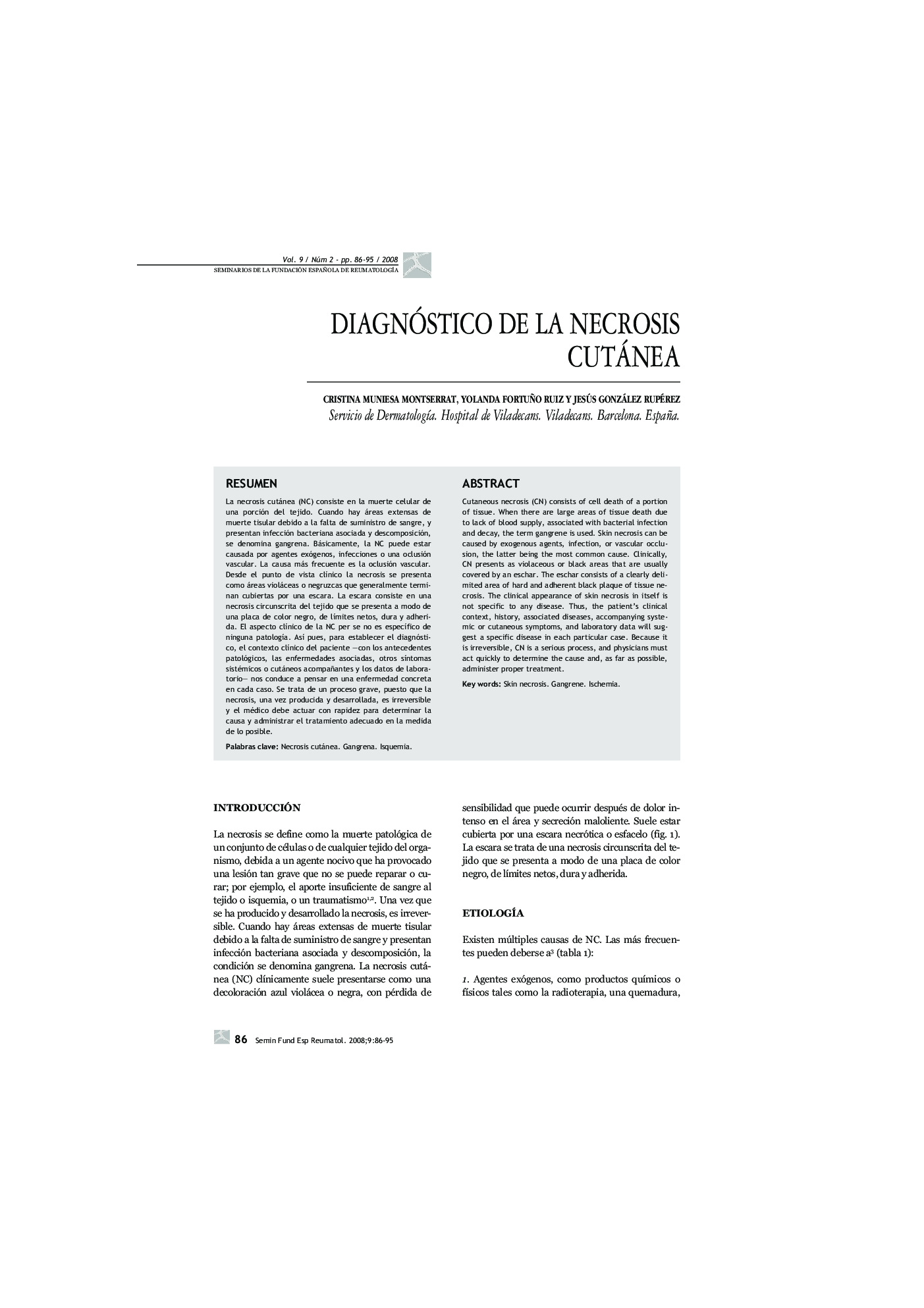| Article ID | Journal | Published Year | Pages | File Type |
|---|---|---|---|---|
| 3391155 | Seminarios de la Fundación Española de Reumatología | 2008 | 10 Pages |
Abstract
Cutaneous necrosis (CN) consists of cell death of a portion of tissue. When there are large areas of tissue death due to lack of blood supply, associated with bacterial infection and decay, the term gangrene is used. Skin necrosis can be caused by exogenous agents, infection, or vascular occlusion, the latter being the most common cause. Clinically, CN presents as violaceous or black areas that are usually covered by an eschar. The eschar consists of a clearly delimited area of hard and adherent black plaque of tissue necrosis. The clinical appearance of skin necrosis in itself is not specific to any disease. Thus, the patient's clinical context, history, associated diseases, accompanying systemic or cutaneous symptoms, and laboratory data will suggest a specific disease in each particular case. Because it is irreversible, CN is a serious process, and physicians must act quickly to determine the cause and, as far as possible, administer proper treatment.
Related Topics
Health Sciences
Medicine and Dentistry
Immunology, Allergology and Rheumatology
Authors
Cristina Muniesa Montserrat, Yolanda Fortuño Ruiz, Jesús González Rupérez,
